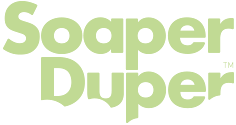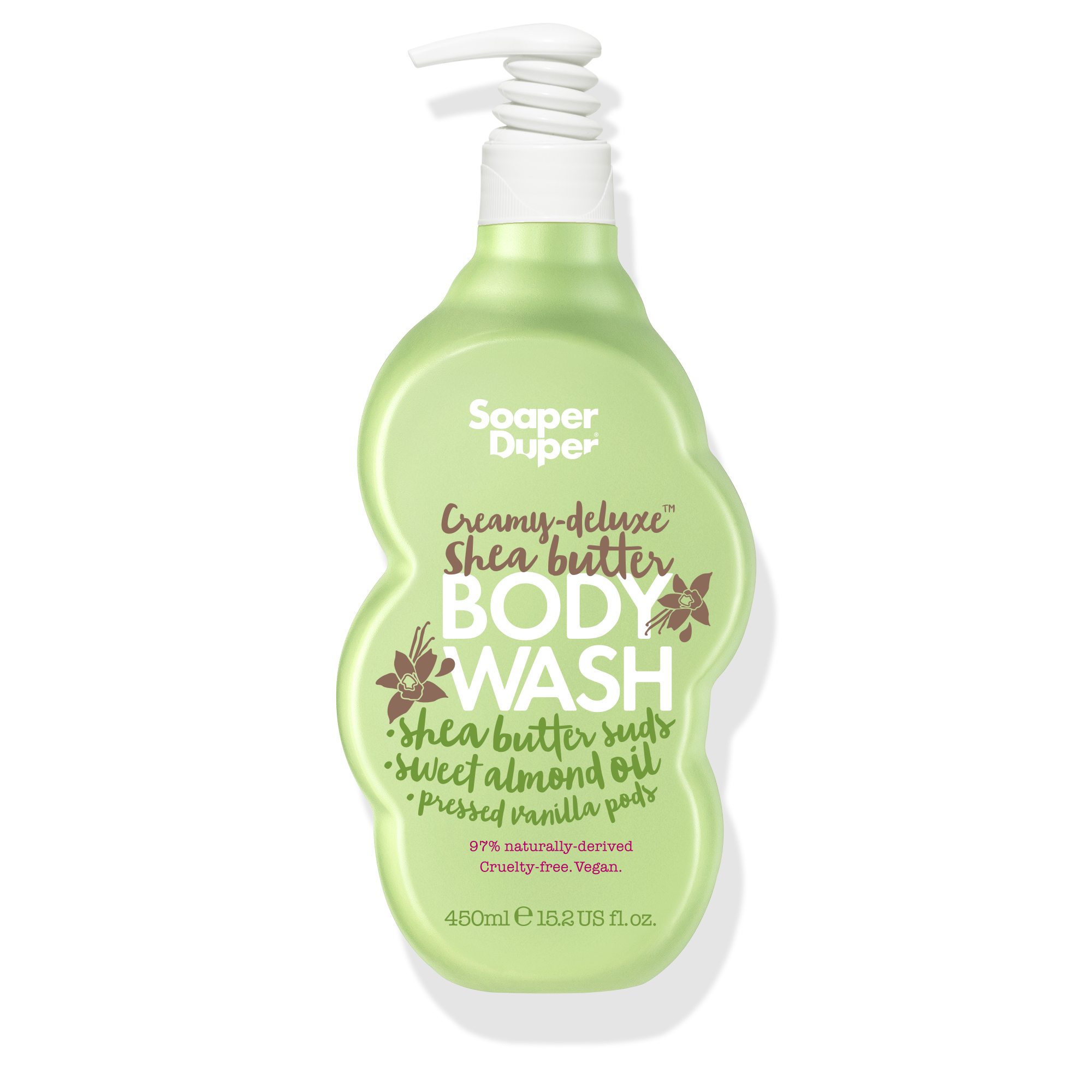What exactly do we mean by THE ‘USUAL SUSPECTS?’
When a girl gets in the shower to suds up - or slather body butter, or lotion, all over - we believe she should be doing it without a worry in the world. So at Soaper Duper, we formulate without what we call The USUAL SUSPECTS, which are the ingredients that - for a variety of reasons - some customers have concerns about. Here’s the lowdown on them in layman’s terms:
Sodium Laureth Sulfate (SLS/SLES)
SLES is an inexpensive foaming agent used in a lot of soaps, shower gels, shampoos – and yes, even toothpaste. Here’s the issue with it, according to our chemist (who we love because she’s remarkably logical and will have a layman’s explanation for pretty much anything we ask her): the head of an SLES molecule loves water, but the tail hates it. So when SLES comes into contact with something greasy (like the oil/sebum that naturally exists on our skin) they act like they do around water and stick in their tails. Your skin cells don’t all fall off every time you wash, right? So SLES molecules can stay entrenched in skin because the tails are stuck. SLES residue can cause chronic dryness, irritation and reduce the skin’s ability to repair its barrier.
Pthalates
Phthalates are mostly used as plasticizers to increase flexibility, transparency, durability and longevity in plastics. And while it’s next to impossible to eliminate exposure to all phthalates (because flexible plastics are all around us – phthalates have been found in 100% of people tested) women who are exposed to high levels of phthalate-containing cosmetics may be at a higher risk for potential adverse health effects. Phthalates are also suspected to have a disruptive effect on the endocrine system – high doses have been shown to change hormone levels and cause birth defects. The ‘suspect’ related activity list for phthalates is extensive, and the use for some types of them is now restricted in the USA and the EU.
Parabens
While the jury’s still out – and probably will be for some time – about the safety of and dangers related to parabens, we’ve decided to use all the newest technology, to incorporate other preservative systems and to formulate around them. True: parabens still exist in edible products and medications. So avoiding them in personal care products isn’t really the biggest issue. The point is, they have a bad reputation, so many cosmetic chemists say the real challenge around parabens is with education. If you want to go paraben-free but still want your products to last, there are some obvious things you can do: don’t attempt to get more from a product by pouring water into it. Avoid dipping dirty hands into jars of cream of scrubs. And don’t refill empty cosmetic packaging, but rather, separate it into component parts, rinse it and (please) recycle it.
Cocamide DEA
Cocamide DEA is a high-irritation-potential foaming agent that is used to thicken bath and shower gels, made from the reaction of coconut oil fatty acids with diethanolamine. The IARC (International Agency for Research on Cancer) categorizes the component as ‘possibly carcinogenic to humans’ and the California Office of Environmental Health Hazard Assessment includes Cocamide DEA on its list of chemicals that are known to cause cancer. Soaper Duper use natural soap bark, plant, and shea butter-based surfactants to get things foaming up instead. Why worry, right?
MIT
MIT is a powerful biocide and preservative that has long been used in a wide range of personal care products. MIT was originally used in rinse-off toiletry products (like shower gels and shampoos), but enthusiastic chemists began to use it as a preservative in leave-on products (like body lotions and facial moisturisers) and it then also became popular as a preservative in household products (like wall paints and appliance cleaners). So popular, in fact, had MIT become, that its use had doubled during the first decade of the 21st century – unfortunately creating overload sensitization problems for some, and a marked increase in the incidence of allergic contact dermatitis and eczema.
Benzophenone-2 (BP-2)
BP-2 is a sunscreen ingredient (surfers, take note) that has been shown – at even very low concentrations – to kill juvenile corals, cause colourful corals to bleach and increase the frequency of mutation in corals. As BP-2 is not removed at the level of most municipal wastewater treatment facilities (something we might hope for in the future), when you shower it off your skin, it ends up being released into coastal waters, and – especially in the Caribbean and Indo-Pacific – it threatens near-shore coral reefs. Scan your prospective sunscreen choice for BENZOPHENONES, people! It’s easy to avoid them!
Triclosan
Sure, a hand sanitizer will work well if it’s got Triclosan in it, because Triclosan stops bacteria from breeding. The suspect issue is that the residue that washes off when Triclosan trickles down the drain continues to kill natural flora and manageable natural microbes (in fact, Triclosan was first registered as a pesticide, and used widely as an industrial chemical). As of today, there is no evidence that Triclosan provides an extra benefit over washing with regular soap and water, and there is evidence that it can contaminate wastewaster, so at Soaper Duper, we’re opting out of it!

